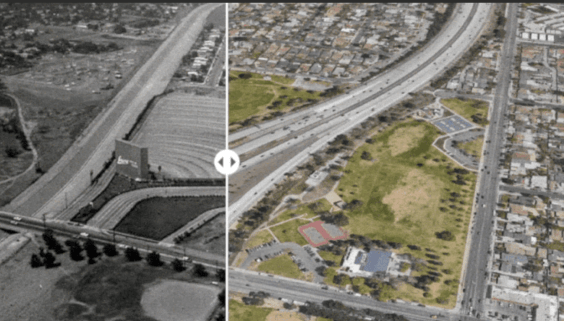Will the Biden infrastructure plan address how our students get to school?
Very few people in the education or transportation worlds are talking about school transportation's place in the Biden infrastructure plan. That's a shame, because the economic, safety, environmental, and social-emotional impacts of these choices can be great, both for students and their broader school communities. While Secretary of Transportation Pete Buttigieg pitches this “once in a generation” infrastructure plan to address the racial and environmental impacts of our transportation system, let’s ground our focus and find solutions to support our most vulnerable community: children.
Over the past ten years, I have taught Physical Education in Washington, DC, Boston, Massachusetts and Portland, Oregon. As a teacher and Safe Routes to School champion, I have seen firsthand how our transportation shortcomings impact the students and school communities that I have been fortunate enough to work with.
Here are three school transportation ideas that the Biden infrastructure plan should incorporate to help address the administration's climate change and racial equity goals in the transportation sector.
1. The Walking School Bus
While the infrastructure plan will mostly focus on traditional forms of transportation such as school buses, we have an opportunity to move into the 21st century with solutions that create clean, active and community-focused options. One potentially transformative solution, especially in urban cities, is the 'walking school bus,' a.k.a. a group of students walking to school with one or more adults.
Most state and school district transportation funding is myopic, restricted to the yellow school bus model. This leaves our school communities limited in their ability to create meaningful and lasting alternatives when the yellow bus doesn’t fully support the community needs. By addressing alternative options to support student travel to school, the infrastructure plan could help our country create a more diverse and resilient transportation plan for our children and schools.
Supporting students walking to school can have great health and social impacts for the students while also creating paid jobs for parents or people in the school community as walking school bus leaders. A federally funded walking school bus initiative would benefit school districts by supporting them in reducing the high cost of busing and help them meet the needs of their community, while also potentially saving states and school districts significant money in the short and long term. These school district budget savings could be redirected to support schools more directly with more resources such as supplies or desperately needed staff.
Here are more resources on the walking school bus model:
2. School Streets
The current arrival and dismissal protocol at schools prioritizes cars over students. This has created an environment where students who walk or bike are put at risk, thus creating a reinforcing cycle where students who can be driven to school are, and those who aren’t are even more vulnerable. The streets around schools should be designed to promote and encourage calm, clean and community focused active transportation to school.
That's exactly why we need "school streets," or car-free streets immediately adjacent to school buildings.
In 12 months, 350 School Streets have been delivered across London to tackle children’s exposure to air pollution & improve their health.
— Will Norman (@willnorman) March 9, 2021
A new @mayoroflondon study on school streets finds:
💚They reduce air pollution by 23%
🚗18% parents drive less
👍81% parents support them pic.twitter.com/27PopCyNQS
Most schools in America are overwhelmed and underfunded, which makes an initiative like School Streets seem impossible to implement even for the most affluent school communities — let alone the schools located in underserved neighborhoods. To implement an initiative like this, the federal infrastructure plan should look at ways to support districts with pilot grants that create a dedicated funding source to pay staff or parents to run the School Streets daily, along with grants to city transportation departments to support the technical component of implementing School Streets.
Even key transportation advocates such as Gabe Klein, Co-founder of CityFi, former Director of DDOT and member of the Biden USDOT Transition team, seemed very supportive of the School Streets idea. We should follow their lead.
Here are more resources on the school streets model:
3. Tactical Urbanism
We all know that building new infrastructure can move at a glacial pace. The request of a kindergarten parent for improvements to an unsafe crossing may not occur until their child is in middle school. That lack of timeliness impacts all of communities but is much worse for underserved communities.
Tactical urbanism helps bridge this void.
Simply put, tactical urbanism is the process of making short-term, low-cost changes to the built environment. While safety concerns around schools can be many — and it can take years for local transportation departments to fund and implement improvements — tactical urbanist solutions can be implemented right away.
These projects could look like a day- or week-long 'pop-up' demonstrations, such as these LADOT's Safe Routes to School street pop-up events. Or they could look like simply adding flexposts and paint to shorten crosswalks, as demonstrated in this MnDOT Safe Routes to School's demonstration project.
Tactical urbanism is also critical for schools because it can be used as a tool to empower students and school communities. For underserved communities, it shows that their safety concerns are valued and that their voices are being heard in a timely manner. Students can learn the importance of civic engagement and valuable advocacy skills, and experience success while working to improve their community.
I'm personally excited about the work my own school in Portland is doing in partnership with Portland State University to address an unsafe crossing near our school with tactical urbanism.
Tactical urbanism can play a vital role in the next infrastructure plan, by providing project funding for a range of small, cost-effective pilots.
While we will have to wait and see how the Biden infrastructure plan takes shape in the coming months, I have confidence that Congressman Peter DeFazio, the Chair of the House Committee for Transportation, will be a strong advocate for these concerns. He has a strong track record on school safety and is an avid supporter of the Safe Routes to School program. Let's hope he and his colleagues in Congress do right by our littlest walkers.
Sam Balto lives and teaches Physical Education in Portland, Oregon at Cesar Chavez School, where he won the Weston Award for his child focused advocacy through Oregon Walks. Previously, Sam taught PE for three years at the Ellis Elementary school in Roxbury, Mass., where he started the Safe Routes to School program to support active transportation for students to school. Through advocacy efforts by Sam and the Roxbury community, the Ellis School last year was awarded the MassDOT Safe Routes to School Infrastructure Project Funding Program. Sam has enjoyed painting Traffic Gardens around Portland during the pandemic and was recently a panelist for the Streets for Kids NACTO-GDCI webinar Rethinking School Streets in the Time of COVID-19.






